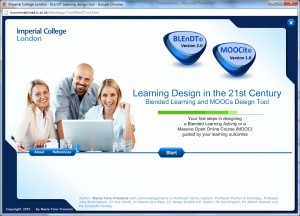
By Dr Maria Toro-Troconis
E-Learning Strategy and Development Manager, Faculty of Medicine Centre
Mobile and web 2.0 technologies are changing the way we access information and learn in the 21st century. On one hand, mobile technology makes access to factual information possible on the Internet anywhere, anytime. On the other hand, social media is harnessing the use of mobile technology providing access to powerful online community experiences.
Factual information that used to be owned by educators and was only available in a limited number of books in the library, is now available at our finger tips on the Internet. This phenomenon is clearly having a knock on effect on the way learning is delivered. An example of this is the proliferation of Massive Open Online Courses (MOOCs) which have the potential to become a disruptive innovation in our academic institutions in the 21st century.
The effect of all of these facts is not necessarily changing the way we teach but it is making us reflect on the way we deliver traditional education. Science Minister David Willetts urged UK universities to invest in online learning through Massive Open Online Course development, in order to meet global demands [1]. A recent Factsheet published by the White House in the United States on the President’s Plan to Make College More Affordable, highlights the need to promote innovation and competition in Higher Education by the development and delivery of ‘blended’ or’ flipped’ classrooms and by promoting the development of (MOOCs)[2].
The question is: are we prepared to facilitate the design and delivery of these new learning experiences in our academic institutions? Do our academics know how best to ‘blend’ or ‘flip’ their courses? Do our academics know what proportion of their teaching could be best delivered in a self-guided/interactive way and what could be best delivered in a collaborative way in the classroom or online, supported by the use of web 2.0 technologies?
Would our academics know how to go about designing a MOOC and what pedagogic approach would be best to follow?
These rapidly evolving innovations and questions are putting pressure on our institutions to come up with pedagogically sound, effective and easy to use learning design tools. This is what motivated the development of the Blended Learning Design Tool (BLEnDT©)[3] back in 2010 at Imperial College London. The new version of BLEnDT© also includes the MOOC Learning Design Tool (MOOC-it©).
The Learning Design Tools (BLEnDT© and MOOC-it©) combine Bloom’s Taxonomy and Learning Theories to guide the development of blended learning activities and the design of MOOCs by the identification of learning outcomes under different Learning Domains.[4]
Learning outcomes are entered into the tool by selecting different verbs under different Learning Domains. The tool will then identify the split between self-guided online learning activities targeting low end cognitive skills i.e. factual and procedural knowledge, as well as collaborative activities that can be delivered either face to face or online supported by the use of web 2.0 technology targeting higher order cognitive skills, i.e. conceptual and metacognitive knowledge.
Figure 2 shows the split (30% collaborative and 70% self-guided) produced by BLEnDT© for a module with 6 learning outcomes.

At the same time the tool will suggest different learning activities that can be implemented in the delivery of the learning outcomes for online self-guided delivery as well as collaborative learning.

MOOC-it© will also guide you in the process of identifying what type of MOOC you’re likely to end up with based on your learning outcomes. For example, xMOOCs[5] have been defined as MOOCs that follow the traditional approach: materials delivered via a Virtual Learning Environment, following self-assessments and in general following activities that are facilitated closely by the teacher(s).
cMOOCs are MOOCs that follow a connectivist [6] approach which means the learning experience is empowered by the networks and connections made within the course. The role of the academic is very much of a facilitator.
Figure 4 shows the split between self-guided and collaborative activities for a MOOC covering 6 learning outcomes. The figure also shows how close the MOOC is to a cMOOC or a xMOOC depending on where the emphasis falls within the X and Y axis (instructionist vs. constructivist).

In this case, for example, 70% of the learning materials in this MOOC can be delivered following an xMOOC approach delivered as self-guided/interactive content, whereas, the other 30% falls under the cMOOC approach which could be facilitated and empowered by the use of web 2.0 technologies.
BLEnDT© is being used in the design of blended learning programmes at the Faculty of Medicine Imperial College London, Imperial College’s Learning and Development Centre and the Lee Kong Chian School of Medicine. The School of Health Sciences at City University London is also collaborating with Imperial in the application of BLEnDT© and the Centre for Technology Enhanced Learning at King’s College is in the process of establishing a collaboration as well.
If you are interested in using BLEnDT© please contact: webmaster.feo@imperial.ac.uk
For further information please visit: http://www.imperial.ac.uk/medicine/teaching/elearning/blendt/
[5] http://www.elearnspace.org/2012/07/25/moocs-are-really-a-platform/
[6] http://www.elearnspace.org/Articles/connectivism.htm
The text and concepts presented on BLEnDT© and MOOC-it© are licensed under a Creative Commons License (Attribution-NonCommercial-NoDerivs) – CC BY-NC-ND
